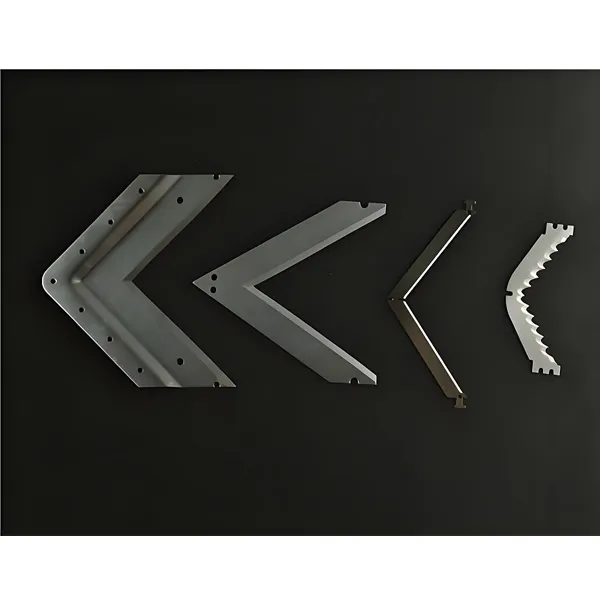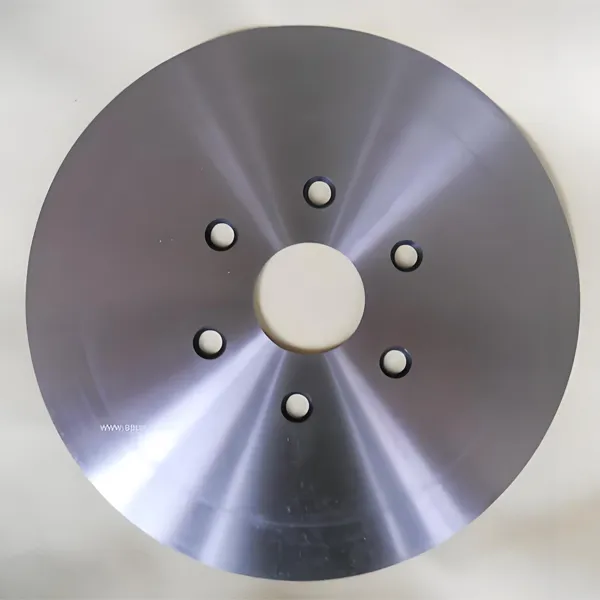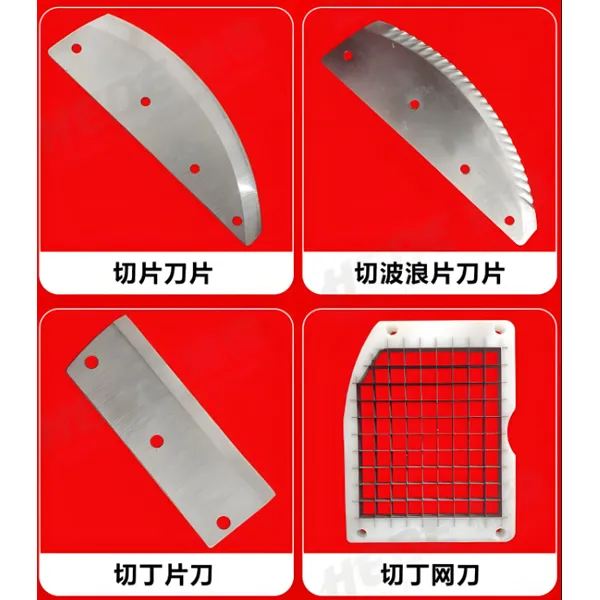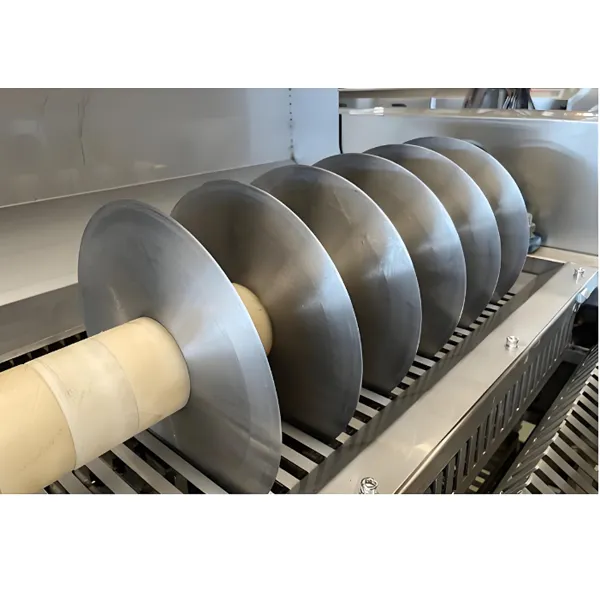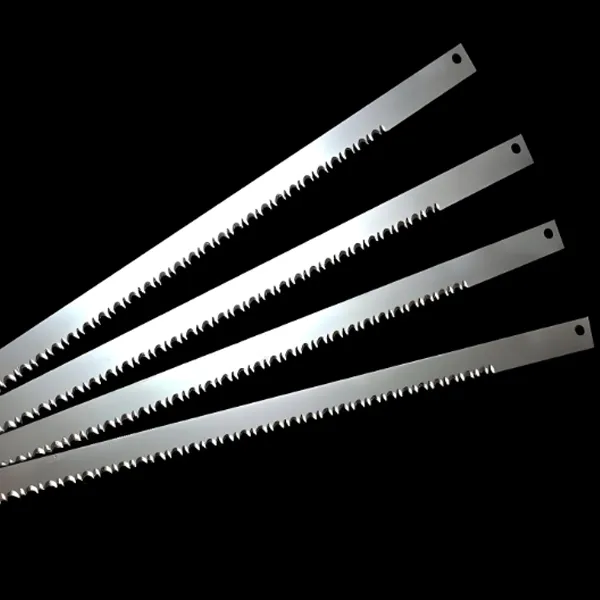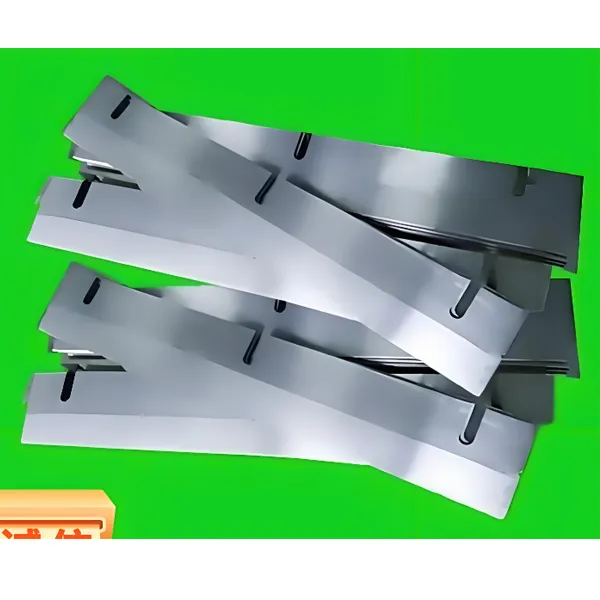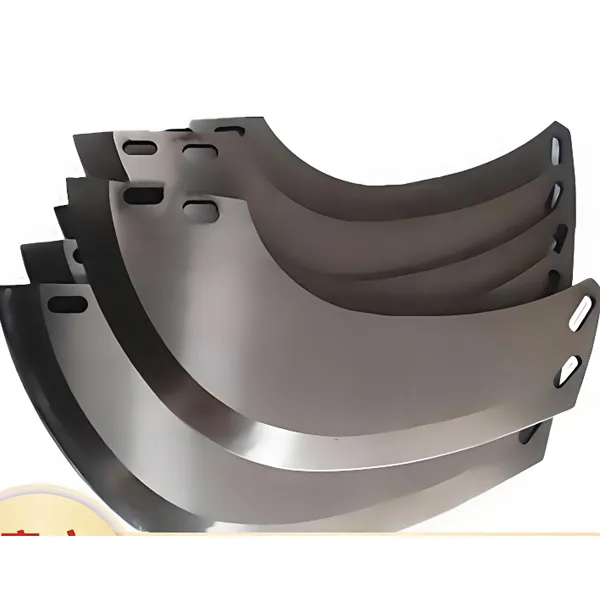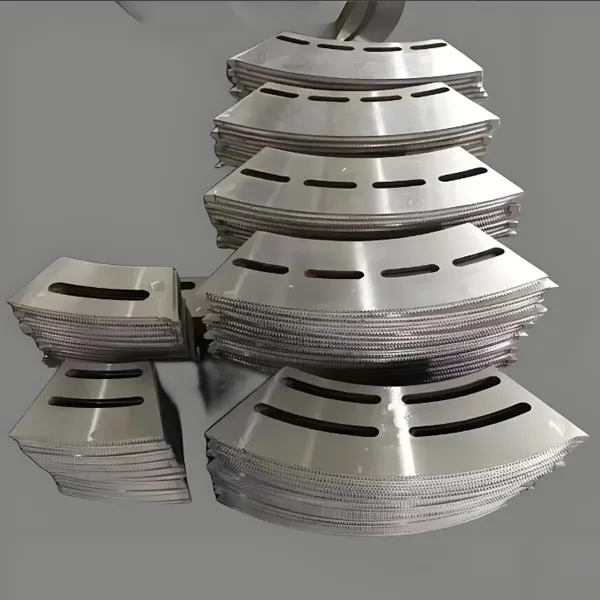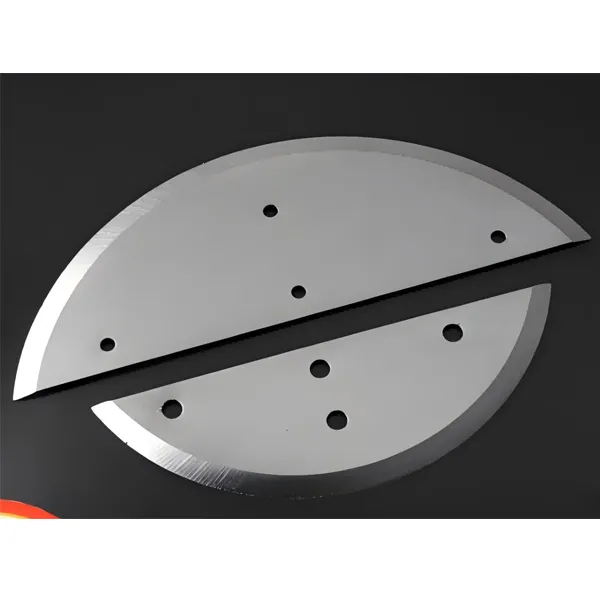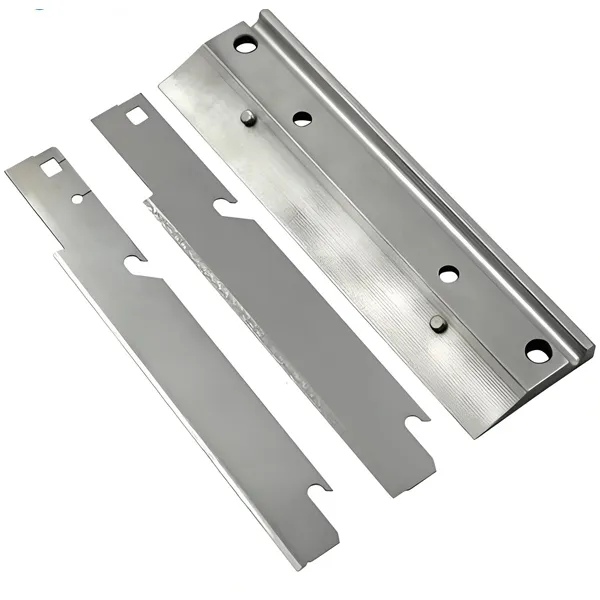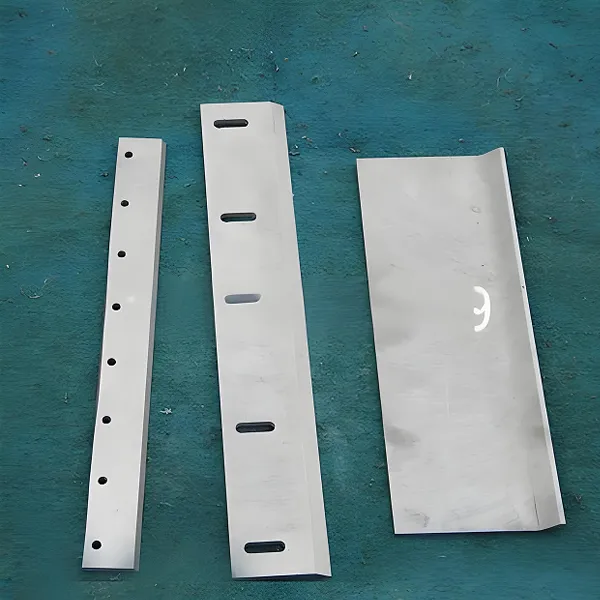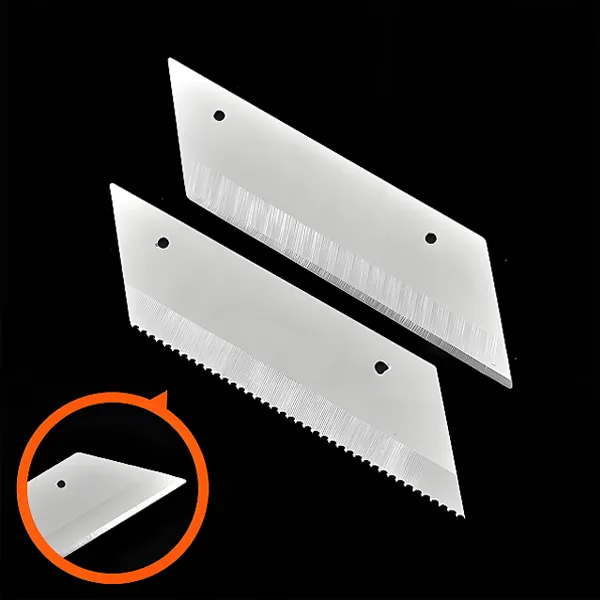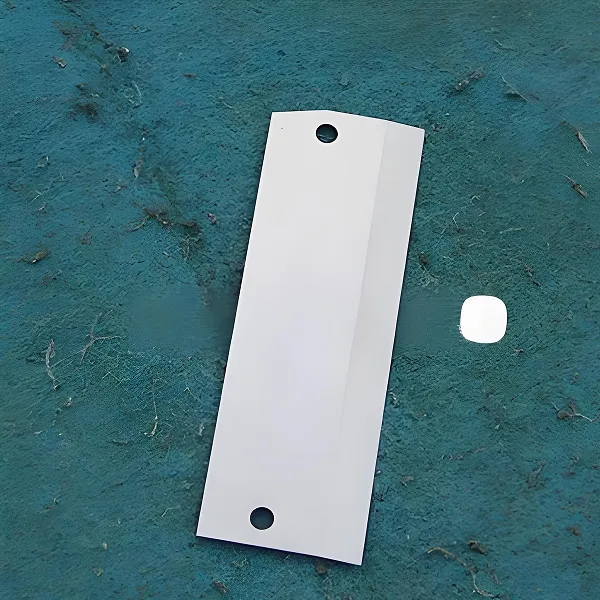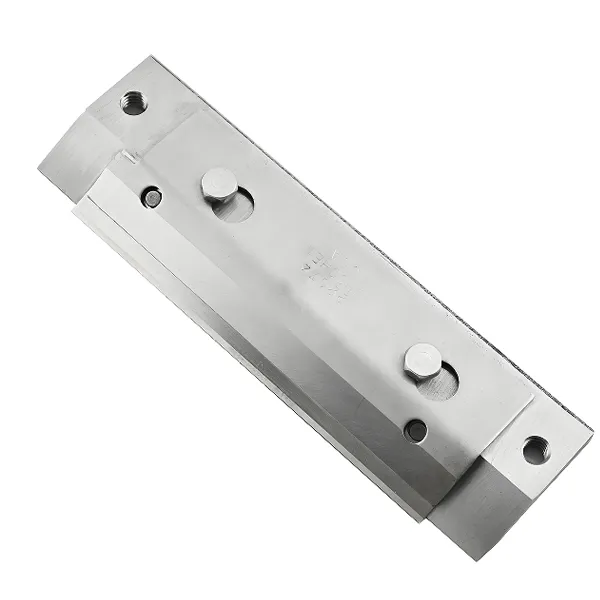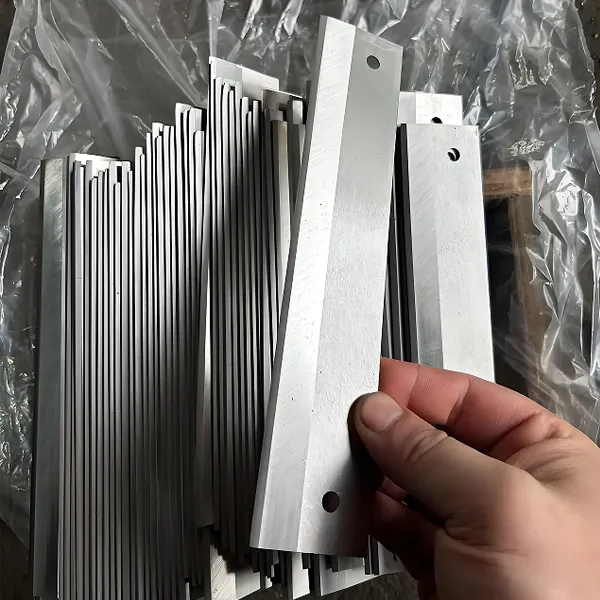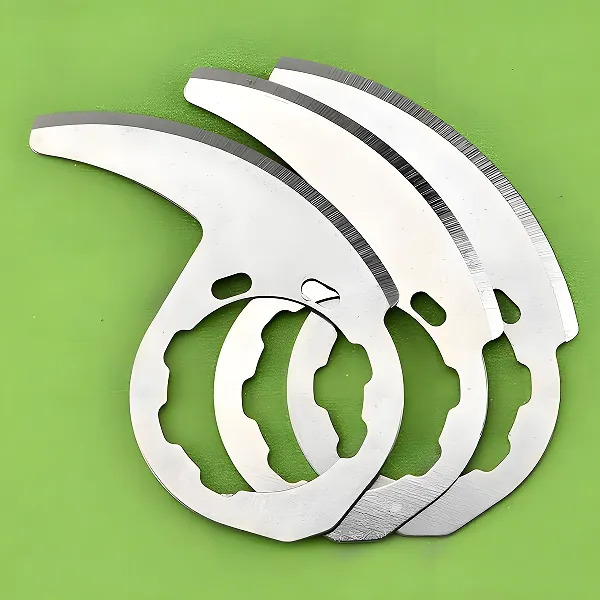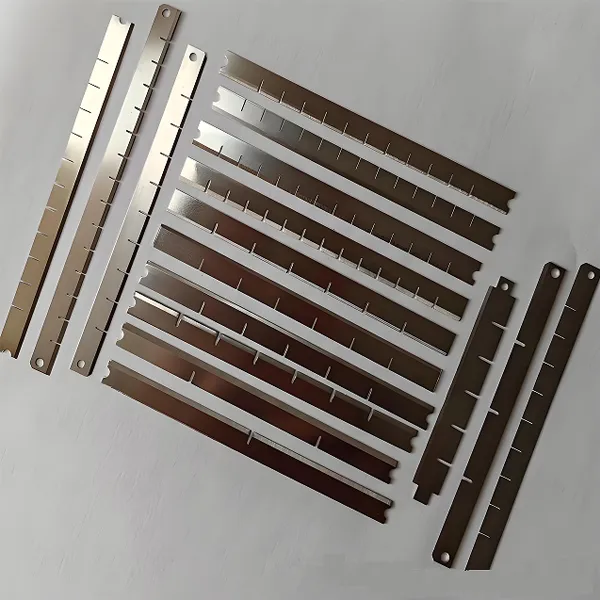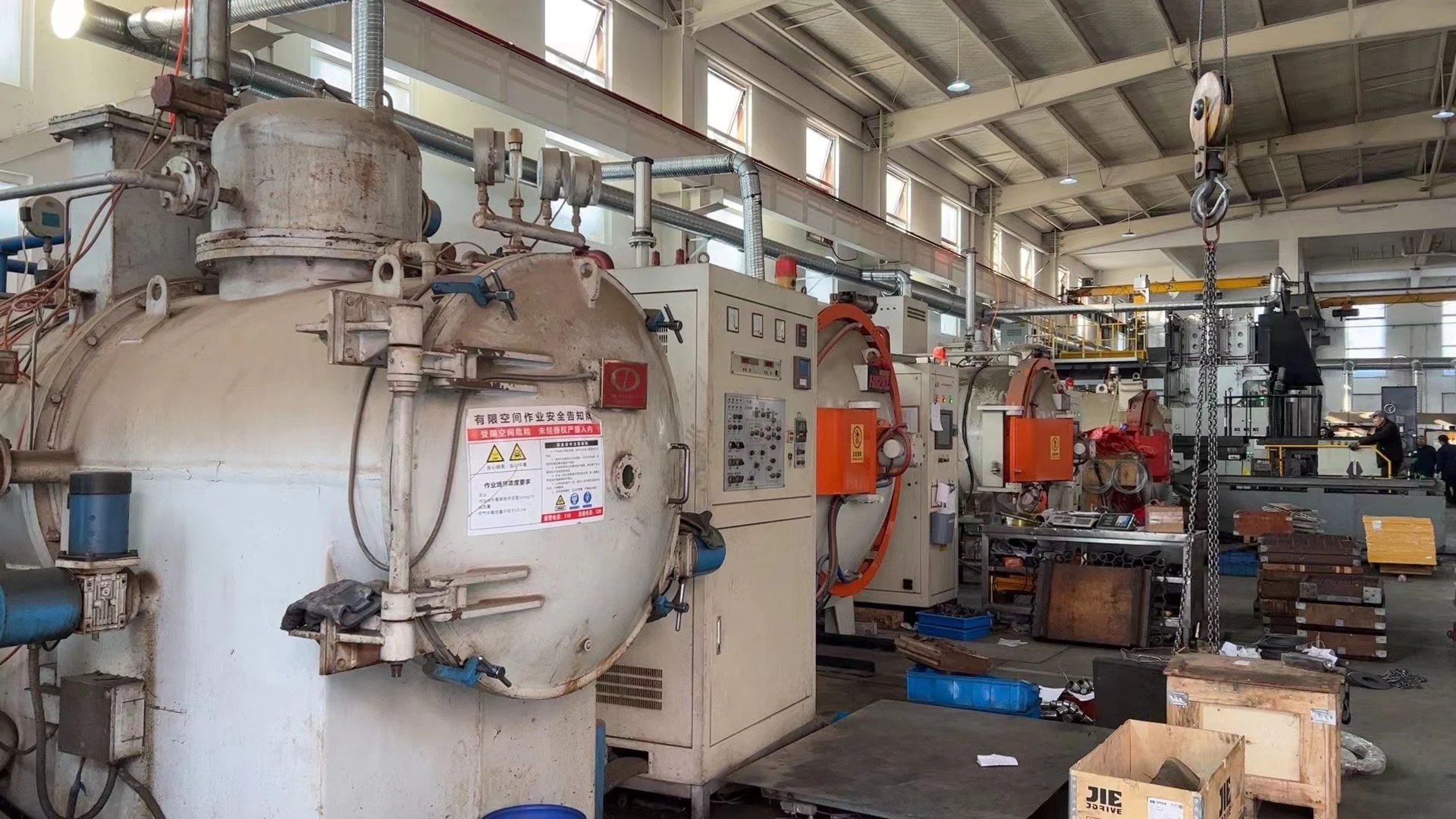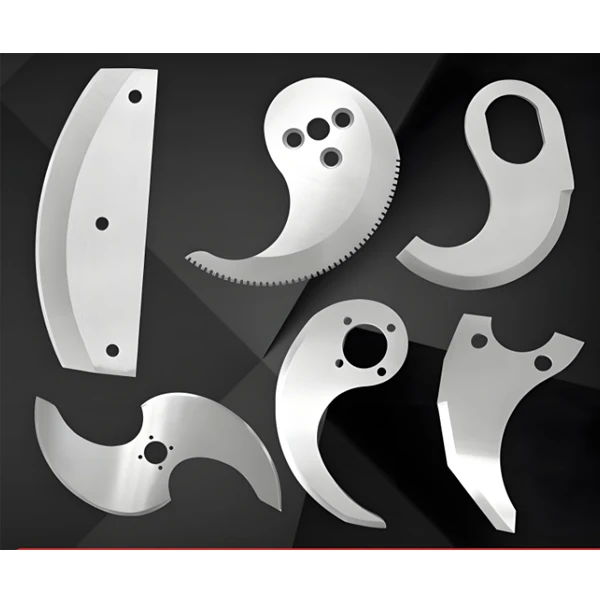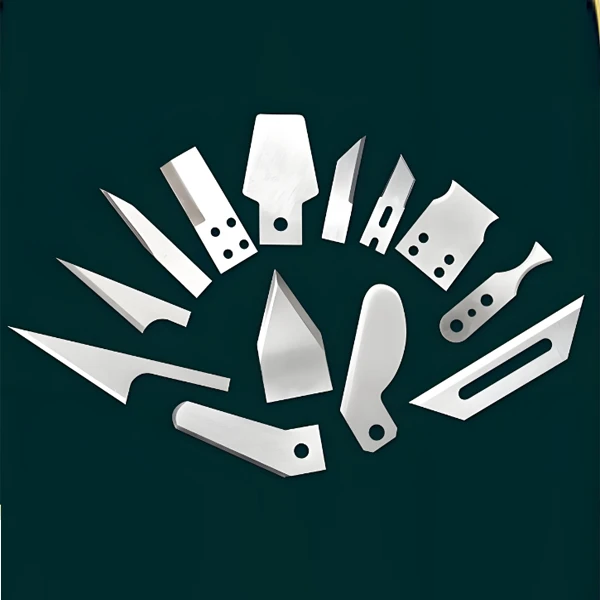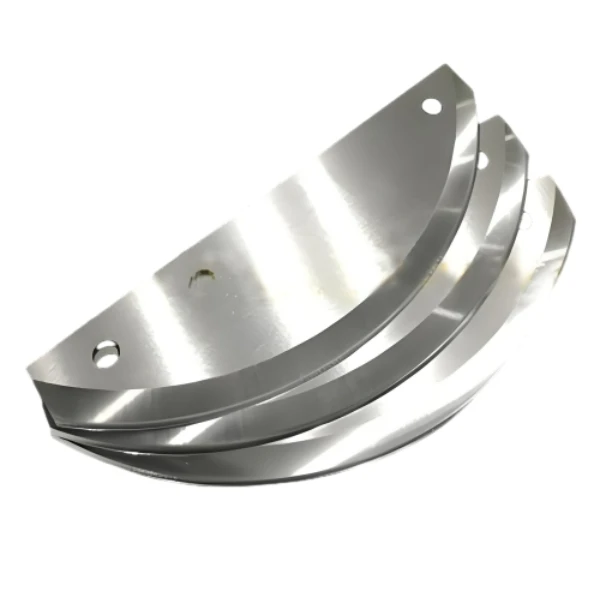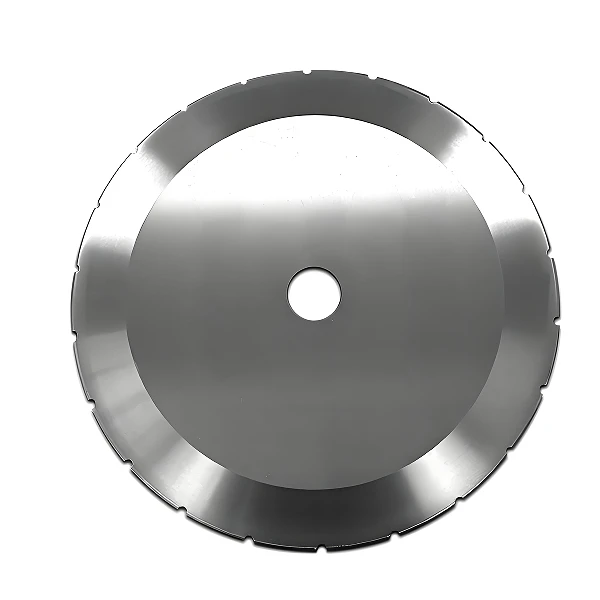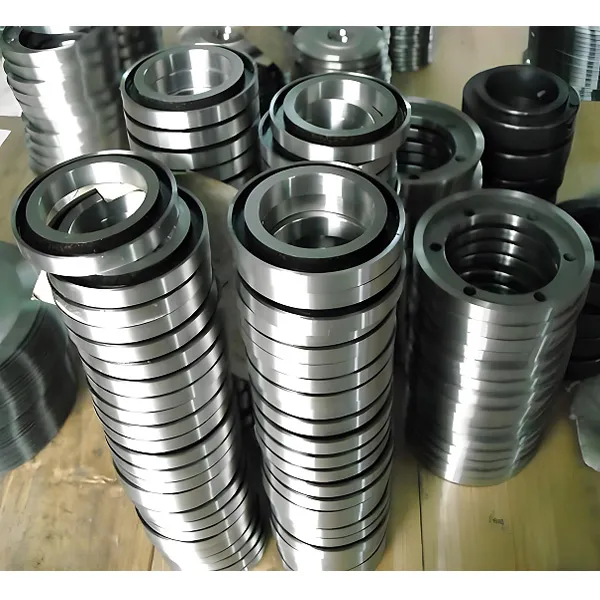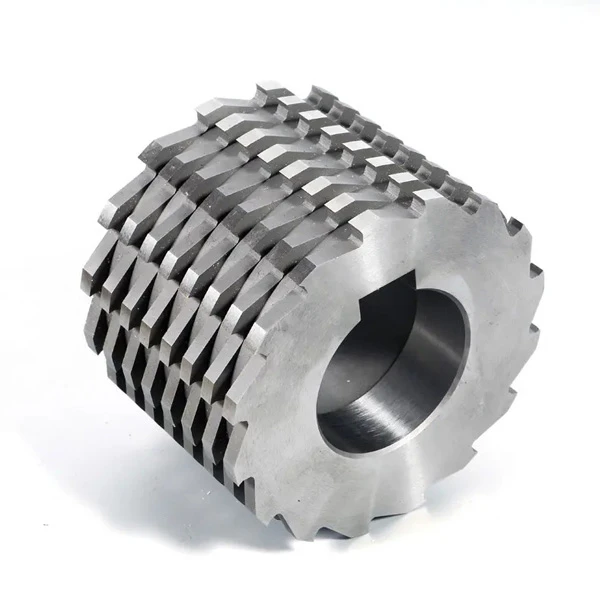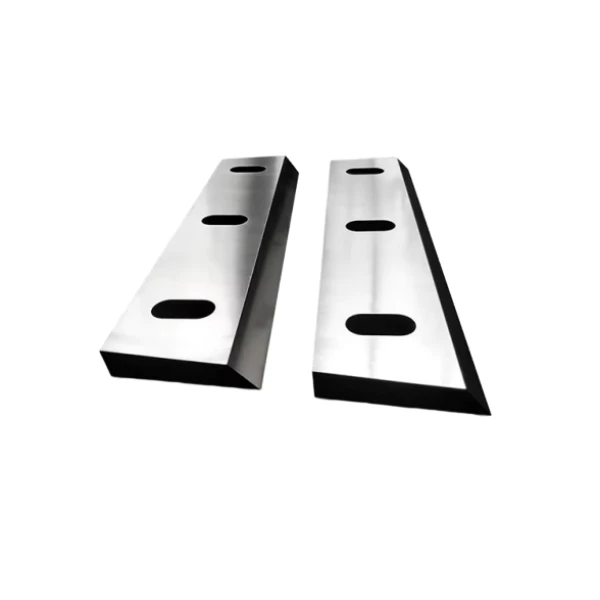- Tel: +86 15003285235
- Email: lena@industrialblades.cc
- Afrikaans
- Albanian
- Amharic
- Arabic
- Armenian
- Azerbaijani
- Basque
- Belarusian
- Bengali
- Bosnian
- Bulgarian
- Catalan
- Cebuano
- Corsican
- Croatian
- Czech
- Danish
- Dutch
- English
- Esperanto
- Estonian
- Finnish
- French
- Frisian
- Galician
- Georgian
- German
- Greek
- Gujarati
- Haitian Creole
- hausa
- hawaiian
- Hebrew
- Hindi
- Miao
- Hungarian
- Icelandic
- igbo
- Indonesian
- irish
- Italian
- Japanese
- Javanese
- Kannada
- kazakh
- Khmer
- Rwandese
- Korean
- Kurdish
- Kyrgyz
- Lao
- Latin
- Latvian
- Lithuanian
- Luxembourgish
- Macedonian
- Malgashi
- Malay
- Malayalam
- Maltese
- Maori
- Marathi
- Mongolian
- Myanmar
- Nepali
- Norwegian
Slicing Blade
1.Fresh meat slicing and cutting: used for precision cutting of ham, bacon, frozen meat and other products, can complete uniform slicing with a thickness of 0.5-3.0mm, meeting the standardization needs of supermarkets and catering chains. For soft meat such as poultry and fish, it can be quickly processed by finely slicing or diced after bone removal.
2.Pre made dish processing: In products such as ready to eat meat slices and hot pot meat rolls, high-speed rotating slicing is used to achieve a processing efficiency of 60-80 slices per minute, thereby increasing production line capacity.
3.Bread and pastry cutting: Equipped with a serrated blade, the slicing knife can accurately cut baked goods such as toast and baguettes, with smooth and non falling cuts, ensuring the integrity of the product's appearance. Used for cutting frozen dough and puff pastry products to avoid food sticking caused by heat generated by tool friction.
4.Processing of vegetable products: Slice/shred root vegetables such as potatoes and carrots, with adjustable blade tilt angle (15 ° -30 °) to adapt to different hardness ingredients. In the clean vegetable processing line, automatic equipment is used to achieve continuous and uniform slicing of vegetables such as cucumber and eggplant.
5.Fruit deep processing: used for standardized slicing of fruits such as apples and pineapples, with a blade thickness of ≤ 0.3mm designed to reduce juice loss and maintain pulp integrity.
6.Processing of cheese and soy products: When cutting cheese pieces, a constant temperature blade (10-15 ℃) is used to prevent adhesion and achieve thin slice processing of 0.2-1.0mm. During the cutting of tofu, dried tofu and other products, the obtuse edge design is adopted to avoid crushing damage.
|
Stainless Steel Blade |
The mainstream material is 304/316 stainless steel, which has strong corrosion resistance and meets food hygiene standards. It is suitable for cutting ingredients such as ham and cheese; Surface chrome plating or polishing treatment reduces food adhesion and improves cutting smoothness |
|
High Speed Steel (Hss) |
Used for cutting frozen meat and high hardness ingredients, with a hardness of HRC58-60 after heat treatment and excellent blade wear resistance |
|
Carbide Inserts |
Some high-end models adopt it, which increases the blade life by 2-3 times and is suitable for high-intensity continuous operation |
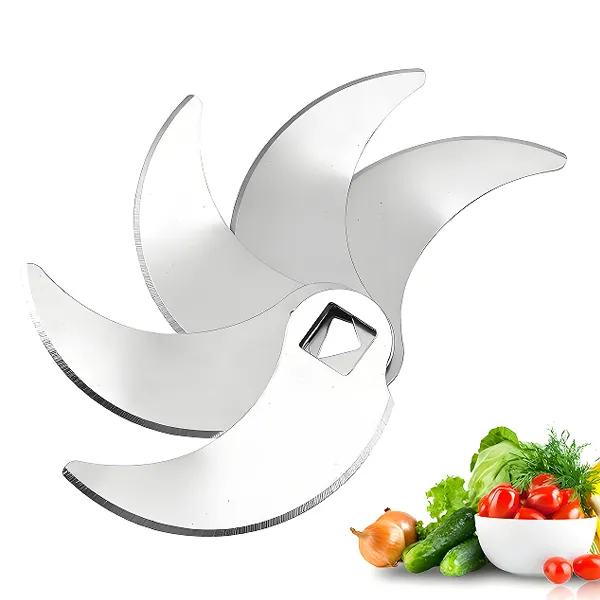
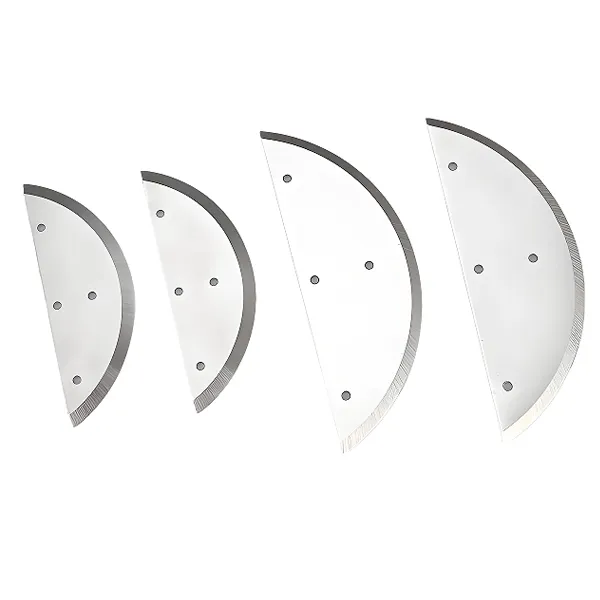
1.Circular blade: used for cutting ingredients such as pastries, frozen meat, vegetables, etc., with a diameter range of 250-319mm;
Surface chrome plating or polishing treatment reduces adhesion and improves cutting smoothness.
2.Opposite blade group: Two sets of high-speed rotating blades form dynamic shear force, generating symmetrical "butterfly shaped" blades when cutting chicken gizzards, with a forming rate greater than 98%; Suitable for high-precision assembly line operations, with a cutting frequency of tens of times per second.
3.Curved blade: designed to fit the curve of ingredients, suitable for evenly slicing cylindrical foods such as ham and sausage; Reduce cutting resistance and lower the rate of food breakage.
4.Wave shaped blade: The cutting surface forms wave patterns, which are used for fruit decoration or to enhance the ability of ingredients to absorb sauces.
5.The serrated blade (tooth height 0.8-1.2mm) is designed specifically for bread and cakes to avoid deformation caused by squeezing; During cutting, the internal organization is maintained intact through the principle of "sawing".
6.Frozen meat serrated knife: serrated depth>2mm, suitable for cutting hard frozen meat, reducing the risk of blade breakage.
7.Butterfly cutting blade set: designed with dual blades rotating inward, accurately cutting along the texture of the chicken gizzard to generate symmetrical thin slices; Dynamic shear force prevents food from being squeezed and deformed.
8.Sashime knife (Masao/Pufferfish lure knife): Japanese rectangular or thin blade (thickness<1.5mm), single-sided cutting, ensuring smooth cutting of raw fish slices;
Different shapes of slicing knives are significantly improved in food processing efficiency and finished product aesthetics through mechanical optimization and scene adaptation
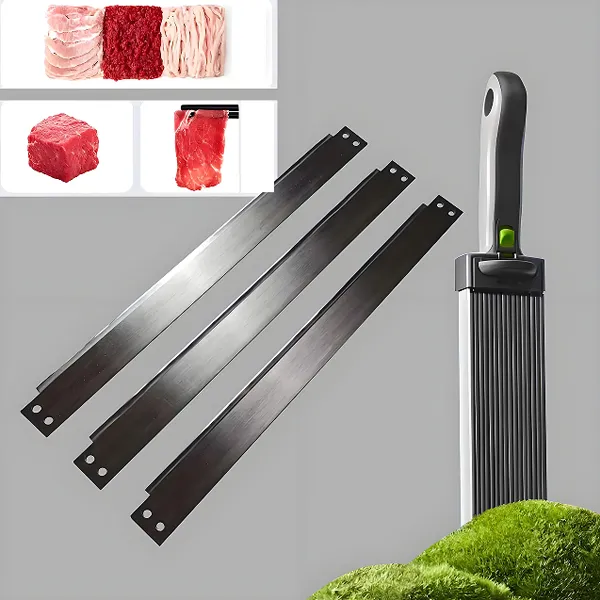
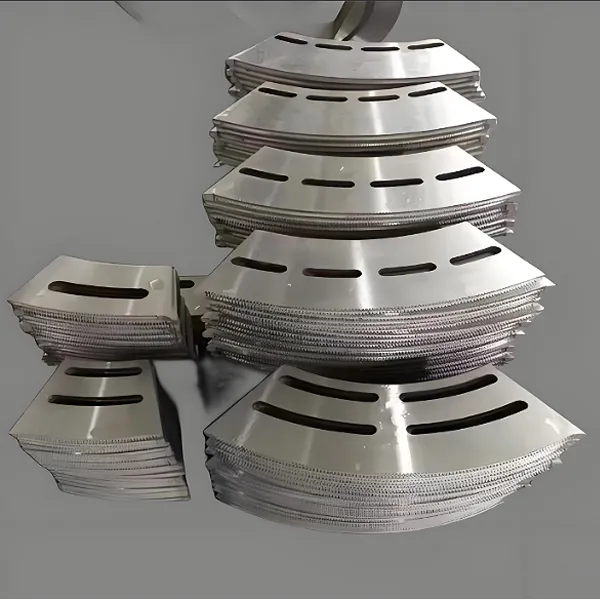
1.Commercial electric slicer blades: suitable for scenarios such as hot pot restaurants and central kitchens, such as the Yucan commercial meat slicer, which supports a dual refrigeration system and maintains a blade temperature of -5 ℃ to prevent frozen meat from thawing and bleeding; Blade diameter: 250-319mm
2.The inclined slicer adopts a 300mm diameter blade with adjustable cutting thickness of 0-13mm, suitable for precise cutting of non bone and meat products.
3.Hand cranked slicing knife: using 100Cr6 steel blades, corrosion-resistant and easy to clean, suitable for cold cutting scenarios such as ham and sausage; The blade diameter can reach 300mm, supporting manual fine cutting with an error of ≤ 0.1mm.
4.Multi functional food knife set: It includes a combination of round blades, chopping and mixing knives, shredding knives, etc., to meet the diverse processing needs of meat slices, vegetables, and fruits.
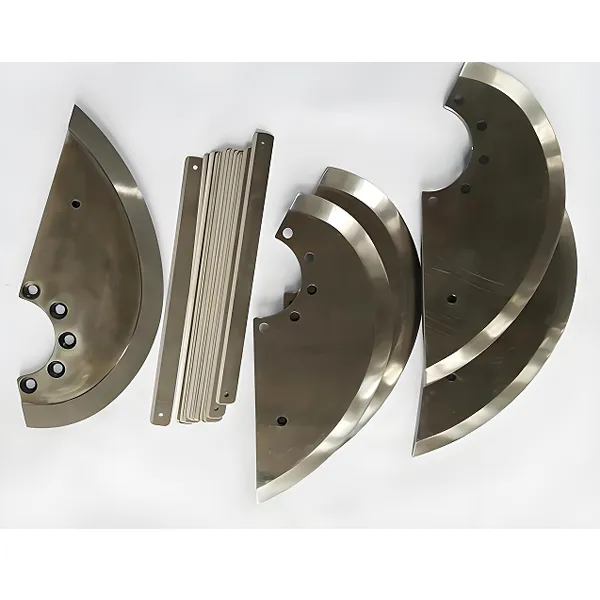
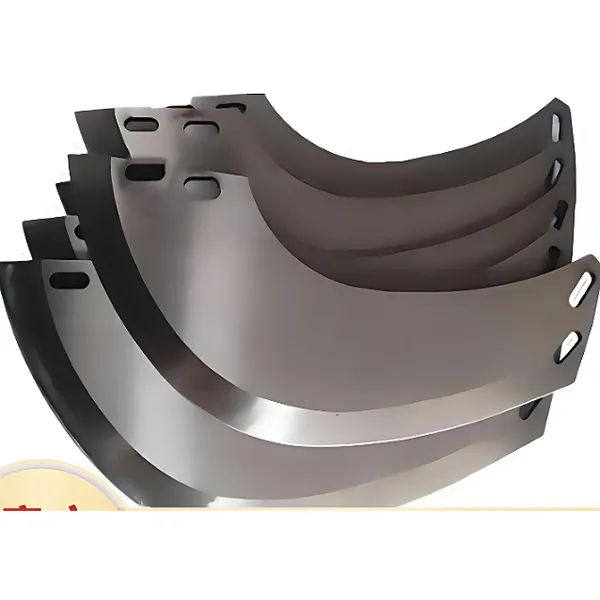
|
Classification |
Core Design |
Typical Application Scenarios |
|
Household Slicing Knife |
Blade thickness 1.8-2.5mm, lightweight design |
Family kitchen cuts meat, vegetables, and frozen fish |
|
Commercial Slicing Knife |
Thickened blade (2-5mm) combined with high-power equipment (such as cold slicing machine) |
Hot pot restaurant, central kitchen continuous meat cutting/freezing |
|
Alien Blade |
Wave blade, serrated blade (such as Craftsman's serrated frozen meat knife) or grid blade design |
Cut frozen meat and shape tofu/rice cake |
Blade diameter:
Conventional commercial models: 250-319mm (such as BERKEL B114 using 319mm blades);
Precision cutting requirement: ≥ 300mm (such as BIZERBA GE30).
Cutting thickness adjustment:
Manual model: 0-3mm (BIZERBA FL30);
Semi automatic model: 0-13mm (BIZERBA GE30).
Power and efficiency:
Commercial electric motor type motor power ≥ 180W, supports continuous cutting of 20 pounds/hour.
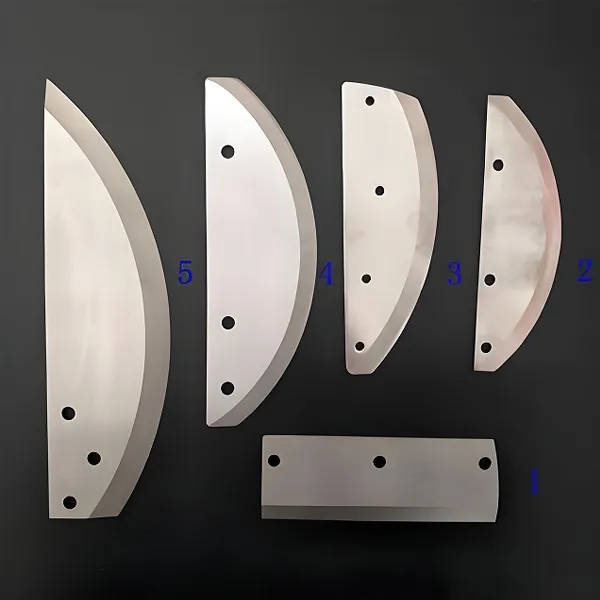
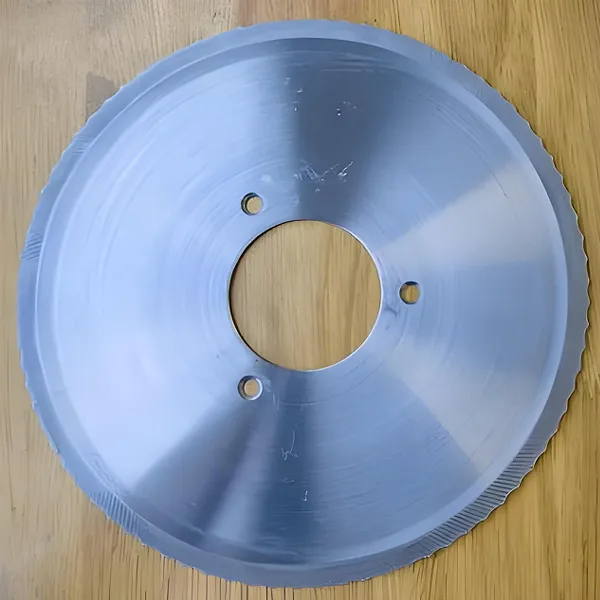
Cleaning requirements:
Blades, hoppers, and other components should be designed to be detachable and immediately rinsed and disinfected after use to prevent bacterial growth;
Sharpening and maintenance:
Built in knife sharpener models (such as BERKEL B114) can automatically maintain the sharpness of the cutting edge, reducing manual intervention;
High speed steel blades need to be regularly ground, and a single grinding can restore more than 90% of the cutting performance.
Security protection:
Equipped with a 360 ° blade guard ring (BERKEL B114) or a movable shield (BIZERBA FL30) to reduce operational risks.
Through reasonable selection and standardized operation, food slicing knives can significantly improve the efficiency of ingredient processing and the aesthetics of finished products, adapting to the needs of multiple scenarios such as catering and meat processing.
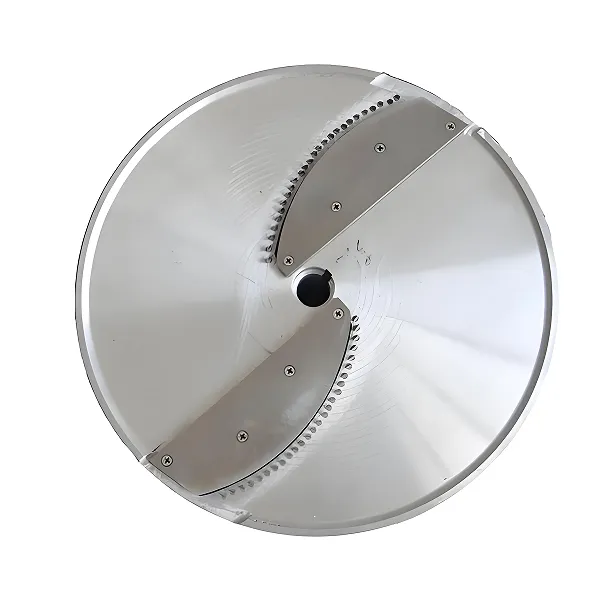
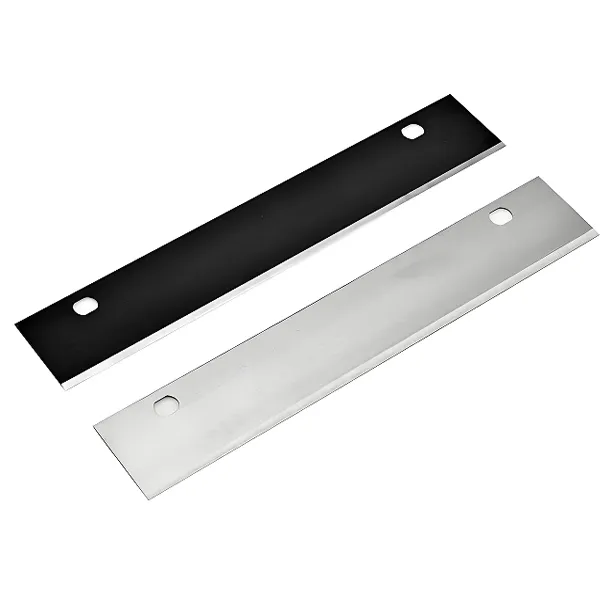
Slicing Blades for All Your Food Processing Needs
Our slicing blades combine durability with precision for superior food cutting applications. The corrosion-resistant stainless steel construction withstands rigorous sanitation protocols while resisting edge dulling. Engineered with balanced designs, these blades operate smoothly at high speeds without vibration. Whether processing cured meats, cheeses, or vegetables, our slicing blades maintain peak performance in both manual and automated slicing equipment.
Get Binsheng Blade Tech Tips
ISO 9001 insights: industry trends & blade guides

